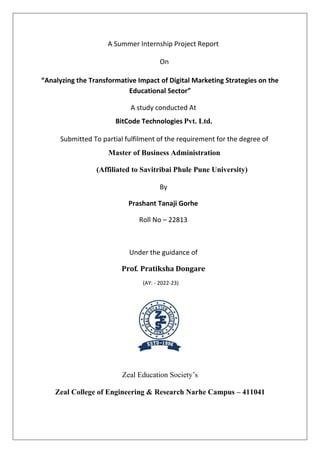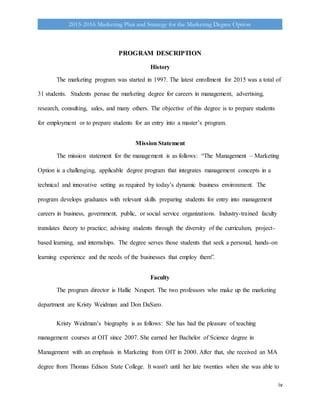
marketing strategies to increase student enrollment pdf
Download your FREE guide to effective student enrollment marketing strategies! Packed with actionable tips and proven techniques to boost applications. Get the PDF now and watch your numbers climb!
Understanding Baseline Metrics
Analyzing current enrollment numbers‚ conversion rates from inquiries to applications‚ and website traffic provides a crucial foundation. This data reveals current strengths and weaknesses‚ informing effective marketing strategies. Identifying trends and patterns within these metrics allows for data-driven decision-making and optimized resource allocation for future campaigns.
Analyzing Current Enrollment Trends
A thorough analysis of current enrollment trends is paramount to developing effective marketing strategies. Examine historical enrollment data‚ identifying patterns and fluctuations over time. Consider factors such as application deadlines‚ program popularity‚ and demographic shifts. Compare your institution’s performance against similar institutions‚ benchmarking your success and identifying areas for improvement. Analyze the yield rate – the percentage of accepted applicants who enroll – to understand the effectiveness of your admissions process. This deep dive into historical data illuminates trends‚ revealing opportunities to target specific demographics‚ refine messaging‚ and optimize resource allocation for maximum impact. Investigate the source of your applicants; understanding where prospective students discover your institution is key to channel optimization. By understanding these trends‚ you can align marketing efforts with areas of greatest opportunity‚ maximizing the return on investment and creating a more focused‚ effective strategy.
Identifying Key Performance Indicators (KPIs)
To effectively measure the success of your enrollment marketing strategies‚ carefully select and track relevant Key Performance Indicators (KPIs). Website traffic (unique visitors‚ bounce rate‚ time on site) provides insights into online engagement. Conversion rates (from website visits to inquiries‚ inquiries to applications‚ applications to enrollment) are crucial for understanding the effectiveness of your marketing funnel. Cost per acquisition (CPA) measures the efficiency of your spending‚ while return on investment (ROI) demonstrates the overall profitability of your marketing efforts. Social media engagement (likes‚ shares‚ comments) reflects brand awareness and community building. Open and click-through rates for email campaigns gauge the effectiveness of your communication strategies. By consistently monitoring these KPIs‚ you gain valuable data-driven insights that enable you to refine your marketing approaches‚ optimize resource allocation‚ and ultimately increase student enrollment. Regular review and adjustment based on KPI performance ensures your strategies remain effective and aligned with your goals.

Defining Marketing Goals
Clearly defined‚ measurable‚ achievable‚ relevant‚ and time-bound (SMART) goals are essential for a successful enrollment marketing strategy. These goals provide direction and allow for focused efforts. Regularly reviewing and adjusting these goals based on performance is critical for success.
Setting SMART Objectives for Enrollment Growth
To effectively boost student enrollment‚ establishing SMART objectives is paramount. These objectives must be Specific‚ outlining precisely what you aim to achieve (e.g.‚ increase applications from a specific demographic by 15%). Measurable objectives allow for tracking progress and assessing the effectiveness of your strategies (e.g.‚ monitor application numbers weekly). Achievable objectives ensure your goals are realistic and attainable within a given timeframe and budget. Relevant objectives align directly with your institution’s overall strategic goals and target specific student segments. Finally‚ Time-bound objectives set deadlines for achieving your goals‚ promoting accountability and providing a sense of urgency. For example‚ aim to increase online applications by 20% within the next academic year. This framework ensures your marketing efforts are focused‚ results-oriented‚ and directly contribute to enrollment growth. Regularly reviewing and adjusting these objectives based on performance data is crucial for sustained success.
Targeting Specific Student Demographics
Effective enrollment marketing requires a laser focus on specific student demographics. Instead of a broad approach‚ identify key segments based on factors like age‚ location‚ academic interests‚ and career aspirations. For example‚ target high school seniors in your region interested in STEM fields with tailored messaging highlighting relevant programs and career prospects. Similarly‚ reach out to adult learners seeking career advancement with information about flexible online programs and scholarship opportunities. This targeted approach maximizes your marketing budget’s impact by concentrating resources where they yield the highest return. Analyze existing student data to identify underrepresented but potentially high-yield demographics. Leverage social media and other digital platforms to reach specific audiences through carefully crafted content and advertising campaigns. Regularly evaluating campaign performance across different demographic groups allows you to refine your targeting strategies over time‚ optimizing enrollment results.

Leveraging Digital Marketing Channels
Digital channels are vital for reaching prospective students. A strong online presence‚ search engine optimization (SEO)‚ and targeted advertising campaigns are essential for effective recruitment.
Optimizing Website for Conversions
Your website is often the first interaction prospective students have with your institution. A user-friendly design‚ clear calls to action (CTAs)‚ and mobile responsiveness are crucial. Ensure easy navigation to key information like programs‚ admissions‚ and financial aid. High-quality images and videos showcasing campus life and student experiences can significantly enhance engagement. Compelling content addressing student needs and concerns builds trust and encourages applications. Integrate a robust CRM system to manage leads effectively and personalize communication. Regularly analyze website analytics to identify areas for improvement and track the effectiveness of your optimization efforts. A/B testing different website elements helps determine what resonates best with prospective students‚ leading to higher conversion rates. By focusing on a seamless and informative online experience‚ you cultivate a positive first impression that fosters enrollment.
Utilizing Search Engine Optimization (SEO)
Effective SEO strategies are vital for attracting prospective students organically through search engines. Keyword research identifies relevant search terms students use when researching colleges‚ such as “best nursing programs‚” or “online MBA programs.” Optimizing website content and meta descriptions with these keywords improves search engine ranking. Building high-quality‚ informative content‚ like blog posts on campus life or program specifics‚ enhances website authority and attracts organic traffic. Creating informative and shareable content improves your chances of showing up in search results when students search for related information. Backlinks from reputable sources further boost your website’s authority and ranking. Regularly monitoring and analyzing SEO performance using tools like Google Search Console provides valuable insights into keyword rankings‚ traffic sources‚ and areas for improvement. By implementing a comprehensive SEO strategy‚ you can drive significant organic traffic to your website and increase student enrollment.
Running Paid Advertising Campaigns (PPC)
Paid advertising campaigns‚ particularly Pay-Per-Click (PPC) advertising on platforms like Google Ads and social media‚ offer a powerful way to reach prospective students actively searching for educational opportunities. Targeted advertising allows you to focus your budget on specific demographics‚ interests‚ and locations‚ ensuring your ads reach the most relevant audience. Crafting compelling ad copy that highlights unique program features and benefits is crucial for driving clicks and conversions. Utilizing strong calls-to-action (CTAs) within your ads encourages immediate engagement and application. Tracking key metrics like click-through rates (CTR)‚ conversion rates‚ and cost-per-acquisition (CPA) provides valuable data for optimizing campaign performance and maximizing your return on investment (ROI). A/B testing different ad variations helps determine which messaging and visuals resonate best with your target audience. Regularly monitoring and adjusting your campaigns based on performance data ensures continuous improvement and effective budget allocation. PPC advertising can significantly boost brand visibility and generate qualified leads‚ ultimately increasing student enrollment.
Personalizing the Student Experience
Tailoring marketing messages to individual student needs and preferences is crucial for building stronger connections and increasing engagement. This approach fosters a sense of personal attention and enhances the overall application and enrollment process.
Tailoring Marketing Messages to Individual Needs
To truly resonate with prospective students‚ higher education marketing must move beyond generic appeals. Understanding individual student needs requires leveraging data analytics to segment audiences based on factors like academic interests‚ career goals‚ geographic location‚ and demographic information. This allows for the creation of highly targeted messaging that speaks directly to each segment’s unique aspirations and concerns. Personalized email campaigns‚ for example‚ can highlight program specifics relevant to individual student interests‚ while website content can be customized to showcase success stories from alumni pursuing similar career paths. Furthermore‚ social media advertising can be refined to reach specific demographics with tailored messaging and visuals. This level of personalization ensures that every communication feels relevant and valuable‚ increasing engagement and the likelihood of application and enrollment. By investing in sophisticated data analysis and personalized content creation‚ institutions can nurture stronger relationships with prospective students and effectively communicate the unique value proposition of their programs. This results in more qualified leads and ultimately‚ higher enrollment rates. This strategic approach allows institutions to avoid the pitfalls of generic messaging that fails to captivate or inspire prospective students.
Creating Engaging Content Across Platforms
Effective higher education marketing hinges on creating compelling content tailored to diverse platforms. This means understanding the nuances of each channel and crafting messages that resonate with the specific audience found there. For instance‚ short‚ visually-driven content works best on platforms like Instagram and TikTok‚ showcasing student life and campus culture. Longer-form content‚ such as blog posts and articles‚ are well-suited for websites and email newsletters‚ providing in-depth information on programs and academic opportunities. Videos‚ whether short promotional clips or longer student testimonials‚ are highly effective across various platforms‚ adding a human element and building trust. Consistent branding across all channels is crucial to maintain a unified and recognizable institutional identity. This multi-platform approach maximizes reach and engagement‚ ensuring that prospective students encounter consistent‚ high-quality content regardless of where they are interacting with the institution online. A well-executed content strategy drives traffic to the institution’s website‚ boosts brand awareness‚ and ultimately‚ improves enrollment numbers. Regularly analyzing content performance and adapting the strategy based on data insights is vital for sustained success. It is also critical to incorporate user-generated content to enhance authenticity and promote student-centric messaging.
Measuring and Analyzing Results
Regularly track key metrics like website traffic‚ application rates‚ and enrollment numbers to gauge campaign effectiveness. Analyze data to understand what’s working and what needs improvement‚ then adapt strategies accordingly for optimal results.
Tracking Key Metrics and Campaign Performance
Effective tracking of key metrics is paramount for assessing the success of your student enrollment marketing campaigns. Website analytics provide insights into traffic sources‚ bounce rates‚ and time spent on specific pages‚ revealing areas for improvement in website design and content. Monitoring application numbers and conversion rates from inquiries to applications helps determine the effectiveness of lead generation efforts. Analyzing the source of applications (e.g.‚ website‚ social media‚ email marketing) helps optimize channel allocation. Furthermore‚ tracking the cost per acquisition (CPA) for each marketing channel is crucial for budget allocation and ROI assessment. By closely monitoring these metrics‚ you can identify high-performing strategies and refine underperforming ones. A robust reporting system allows for regular evaluation and informed adjustments to ensure your campaigns remain effective in driving student enrollment.
Adapting Strategies Based on Data Insights
Data analysis is not a one-time event; it’s an ongoing process crucial for refining your student enrollment marketing strategies. Regularly reviewing key performance indicators (KPIs) like website traffic‚ application rates‚ and campaign ROI allows for data-driven adjustments. If a particular marketing channel consistently underperforms‚ resources can be reallocated to more effective channels. For example‚ if social media campaigns show low engagement‚ the content strategy might need revising‚ or a different platform may be more suitable. Similarly‚ if website conversion rates are low‚ A/B testing different calls to action or website designs can improve results. Analyzing demographic data can refine targeting efforts‚ ensuring marketing messages resonate with specific student segments. By continuously monitoring data and making data-informed changes‚ you optimize your marketing efforts‚ maximizing your return on investment and achieving sustainable enrollment growth. Agility in adapting to data insights is key to success.